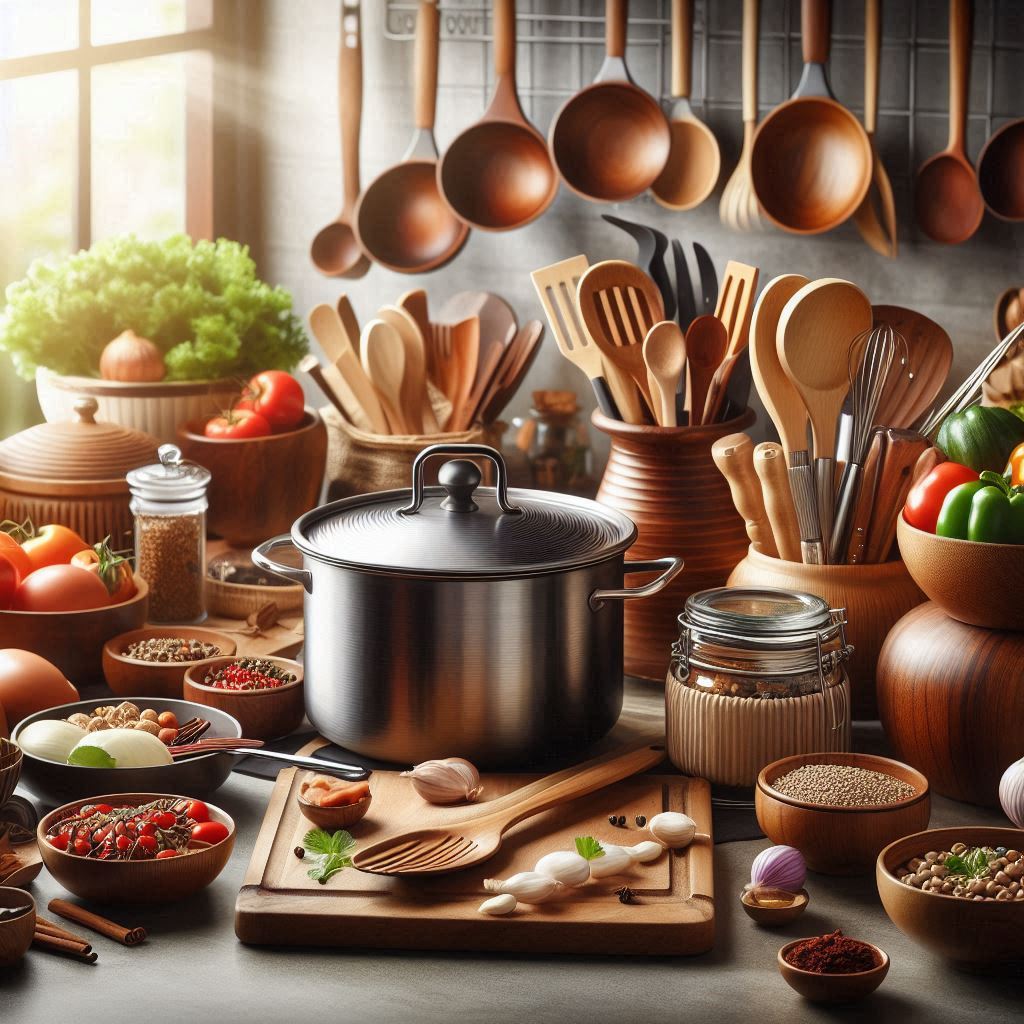If you’re torn between All-Clad and Cuisinart Multiclad Pro, you’re not alone. Both brands are popular for stainless steel, fully clad cookware, and both look nearly identical at first glance. But here’s the truth:
They’re not the same. Not even close.
I’ve cooked with both. I’ve burned things in both. And I’ve cleaned way too many pans to not have a strong opinion here.
So let’s break it all down—price, performance, build, durability, and heat control—so you know exactly what you’re paying for, and what you’re sacrificing if you go the cheaper route.
Quick Comparison: All-Clad vs. Cuisinart Multiclad Pro
| Feature | All-Clad D3 | Cuisinart Multiclad Pro |
|---|---|---|
| Made In | USA | China |
| Material | 3-Ply: Stainless Steel + Aluminum Core | 3-Ply: Stainless Steel + Aluminum Core |
| Construction | Fully Clad (base + sides) | Fully Clad (base + sides) |
| Heat Conductivity | Excellent – quick, even heating | Good – slightly less even |
| Heat Retention | Great – holds heat well | Good – retains heat, but cools faster |
| Oven-Safe Temperature | Up to 600°F | Up to 500°F |
| Induction Compatible | Yes | Yes |
| Handles | Riveted stainless steel | Riveted stainless steel (less ergonomic) |
| Lids | Stainless Steel | Stainless Steel |
| Warranty | Limited Lifetime Warranty | Limited Lifetime Warranty |
| Price Range (10-pc set) | $700–$1,000+ | $250–$350 |
1. What’s the Real Difference Between All-Clad and Multiclad Pro?
All-Clad is the original. The benchmark. The gold standard.
It’s made in the USA, has been around for 50+ years, and is built to survive serious cooking.
Cuisinart Multiclad Pro is the budget version.
It mimics All-Clad’s design with 3-ply construction but is made in China and comes at a much lower price.
The difference?
Build quality, heating performance, finish, and long-term durability. You get what you pay for.
2. Build Quality: Are They Really the Same?
They both advertise 3-ply stainless steel with an aluminum core, and both are fully clad (not just impact-bonded)—which is a win. But that’s where the similarities stop.
All-Clad D3:
- Uses higher-grade stainless steel
- Aluminum core is thicker and bonded better
- Built in the USA with top-notch quality control
Cuisinart Multiclad Pro:
- Made in China
- Slightly thinner aluminum core
- Minor finish imperfections out of the box (rougher edges, inconsistent polish)
Result?
- All-Clad feels tighter, smoother, more balanced in the hand
- Multiclad Pro feels a little lighter, thinner, and cheaper—but still solid for the price
3. Cooking Performance: Which One Heats Better?
| Test | All-Clad D3 | Cuisinart Multiclad Pro |
|---|---|---|
| Heats Fast? | ✅ Yes | ✅ Yes, but not as quick |
| Heats Evenly? | ✅ Yes, no hot spots | ⚠️ Mostly, but edge heat can be uneven |
| Heat Retention? | ✅ Holds steady | ⚠️ Cools a little quicker |
| Reacts to Temperature Changes? | ✅ Very responsive | ⚠️ Slower to adjust |
In side-by-side tests, All-Clad gets hotter, faster, and distributes heat more evenly across the pan. The heat climbs quickly and adjusts faster when you change burner temps.
Multiclad Pro works, but you’ll notice:
- Edges are cooler
- Food may brown slower
- It’s more forgiving but less precise
4. Usability: What’s It Like to Actually Cook with Them?
All-Clad:
- Lighter than you’d think for its quality
- Balanced, well-constructed handle (though some people find it uncomfortable)
- Lids are tight-fitting
- Rivets are smoother and don’t trap food as much
Multiclad Pro:
- A bit heavier and more bottom-heavy
- Handles are fine but more awkward, especially when wet or greasy
- Rivets stick out more, harder to clean
- Lids work well, but not as tight-fitting
5. Durability: Which One Lasts Longer?
All-Clad will outlive you. No joke.
- Welds and rivets don’t loosen
- No warping, even under high heat
- Surface resists staining better
- Still performs like new after 10+ years
Multiclad Pro can last if treated gently, but:
- More likely to warp under high heat
- Scratches show faster
- Over time, the base can separate in rare cases (seen on older pans)
6. Price: How Much Are You Really Saving?
| 10-Piece Set Price | All-Clad D3 | Multiclad Pro |
|---|---|---|
| Regular Price | $999+ | $349 |
| Sale Price | $699–$799 | $249–$299 |
So you’re saving $400–$700 by going with Cuisinart.
But here’s the thing: If you cook every day and keep your pans for 10+ years, the cost per year is actually cheaper with All-Clad.
Final Verdict: Which One Should You Buy?
| Choose All-Clad If… | Choose Cuisinart Multiclad Pro If… |
|---|---|
| You want professional-grade cookware | You want solid performance on a budget |
| You cook 5+ times a week | You cook a few times a week or less |
| You want fast, even heating and precision | You’re okay with slightly slower, less even cooking |
| You want cookware that lasts 20+ years | You’re fine replacing it after 5–10 years |
| You prefer USA-made craftsmanship | You’re cool with imported budget options |
My Personal Take?
If you’re serious about cooking and want the best performance, durability, and resale value, go with All-Clad—no hesitation.
But if you’re on a budget or just getting started, Cuisinart Multiclad Pro gives you 70% of the performance at 30% of the price—and that’s hard to argue with.
So the question isn’t which one is better. It’s what’s better for you.


Leave a Reply